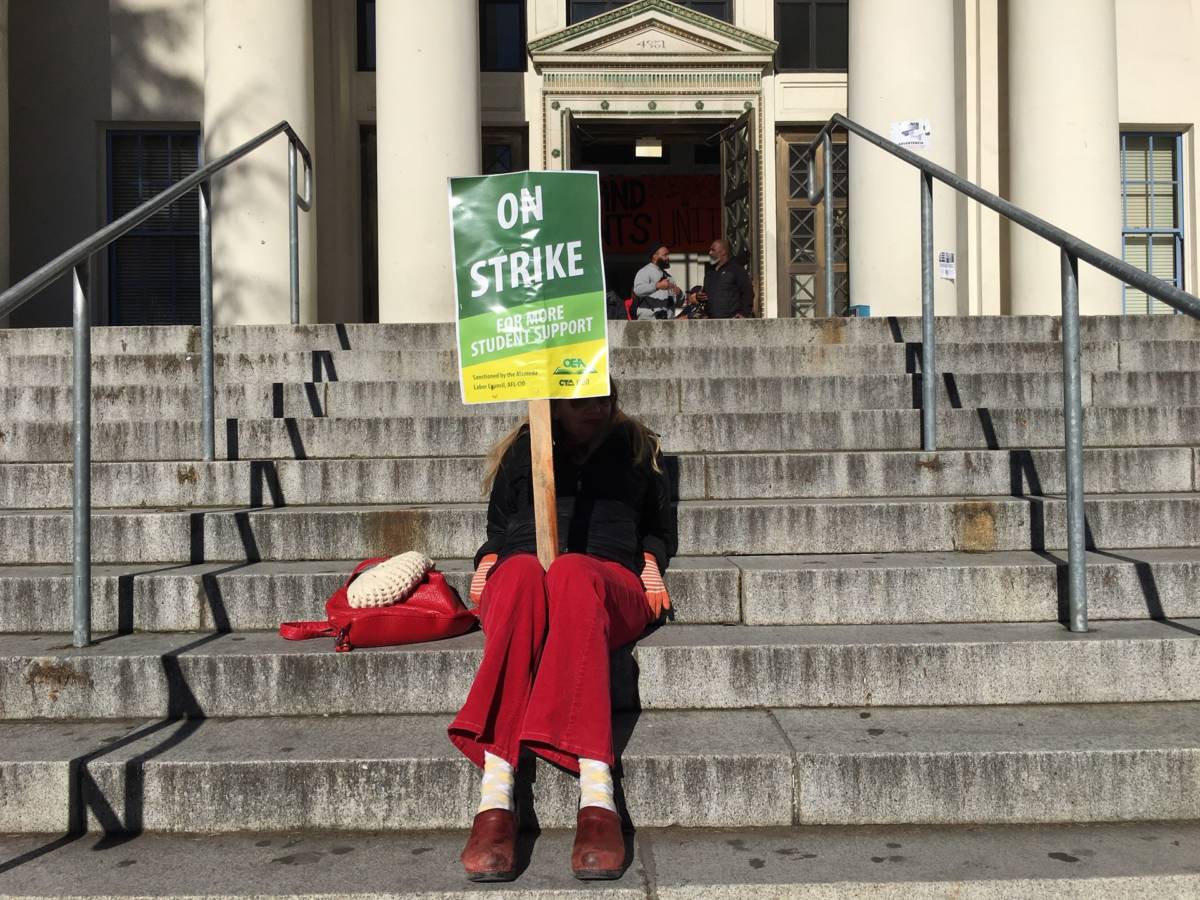“Our numbers show the impact that the student absences are having on the district in support of our teachers,” Superintendent Kyla Johnson-Trammell said Tuesday. “It lends greater urgency to the need to settle our contract negotiations with the Oakland Education Association.”
The OEA, union representing teachers, says even fewer students — by its estimates 3 percent — have been in school during the strike.
Union officials acknowledged that the loss of funds to the district could lead to more budget cuts, which they hope will not impact students in the classroom. Negotiations continued late into the evening Tuesday with Tony Thurmond, the state superintendent of public instruction, acting as a mediator.
“If the district didn’t want to incur these costs, they shouldn’t have dragged out negotiations for two years and slow-walked talks since the strike began,” said Ismael Armendariz, the first vice president of the Oakland Education Association, which represents some 3,000 teachers, nurses and counselors. “The ultimate settlement will probably now require deeper cuts in central office personnel and outside consultants, since the goal of the union and the community is to get more resources into the classroom.”
The union has not provided estimates of how much it thinks could be saved by cutting consultant contracts and central office staff.
“The loss of ADA is significant, but there are also offsetting factors, such as the money not being spent on teacher salaries during the strike,” said Karen Monroe, Alameda County superintendent of schools, who must by law sign off on the district’s annual budget. “Regardless, the district must make cuts and those cuts need to be focused on Oakland’s budget shortfall and their deficit spending.”
The Oakland school board is set to vote Wednesday night on about $20.2 million in cuts to the district’s 2019-20 budget , along with $1.6 million in cost-savings and revenue generation, reductions that are intended to help fund teacher raises, class size reductions and other student supports. The district says it’s unclear how the loss of funding due to the strike will affect the overall budget, but it hopes to resolve the strike soon.
Oakland Unified typically receives just over $2 million a day in state funds based on student attendance. That also includes funds it receives from the state lottery, as well as “mandated block grant” funds.
Because striking teachers are not getting paid, the district's losses are being offset to some degree by wage cost savings, which amounts to about $1 million per day, SSC estimates. The estimate, however, does not take include the savings the district may have realized from other non-management, non-teaching staff known as “certificated staff,” such as nurses, counselors or librarians, who are also out on strike.

Accounting for that, the district's net loss during the strike is just over $1 million a day, based on SSC's rough estimates.
These losses do not include the considerable cost of hiring substitute teachers for the duration of the strike.
The district has so far offered teachers a 7 percent raise over the time period of January 2019 through 2021, and a retroactive one-time 1.5 percent bonus, along with modest class size reductions and other supports. Teachers are asking for a 12 percent raise over three years, covering 2017 through 2020, along with significant reductions in class sizes and increases in counselors and nurses.
Monroe said the district cannot approve any agreement that would jeopardize its fiscal solvency.
“I would not say no, unequivocally, to the proposed 12 percent increase, but I would not be able to approve any agreement that puts the district in further fiscal peril,” Monroe said, adding that an acceptable agreement is dependent on a number of factors that include the cuts the district is willing to make, along with whether what the district agrees to represents an ongoing financial commitment or just a one-time expenditure.
It's a position supported by Chris Learned, the state trustee, who said recently that he would veto any budget he considered to be fiscally irresponsible, including one that gives teachers the 12 percent raise they're asking for.
EdSource is tracking developments this year in the Oakland Unified and West Contra Costa Unified School Districts as a way to illustrate some of the most urgent challenges facing many urban districts in California. West Contra Costa Unified includes Richmond, El Cerrito and several other East Bay communities.



